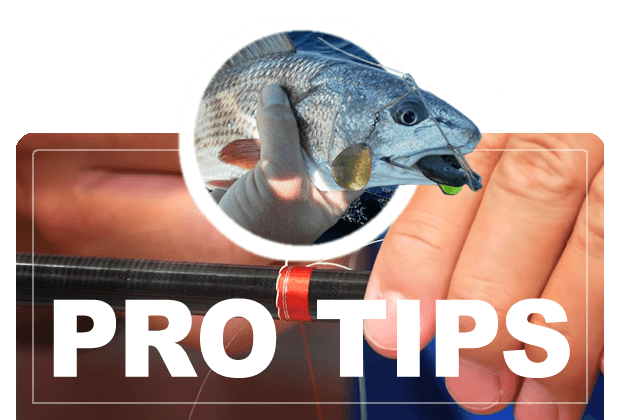How to Build Your Own Custom Fishing Rods (Part 2)
In the first installment of this series, we discussed some of the tools you will need. We also talked about the blank and many of its aspects. Now we move on to the many components necessary to complete your rod.
The first component is the grip which includes a butt cap, the butt grip, the reel seat and the fore grip. The main point here is that all these separate parts come together to make one important aspect of your rod. While there are many variations regarding all of the above mentioned parts, hopefully we can narrow them down to two basic types. For example the butt cap can be a gimbal so it holds steady in a boat rod holder or a cap made of plastic (ugh), cork or EVA. If I am building offshore trolling rods I always use a gimbal, either metal or graphite depending on the strength necessary. The butt grip usually comes down to two choices, cork or EVA. EVA foam is dense, durable and comfortable. Cork is generally considered more attractive. In the end, the choice is yours or more specifically which feels better to grip to you. Most EVA butt grips are between 7 inches and 10 inches long. (It should be noted that for heavier duty offshore rods a much stronger setup is recommended called a uni-butt. This consists of one piece of metal that has a gimbal on one end and a reel seat on the other end. They come in various configurations and sizes.) The other grip material is cork. Cork rings today are not of the quality they were several years ago. However, if you are willing to pay the price you can still obtain high quality cork rings. Cork rings typically come in ½ inch widths so for an eight inch length you would need sixteen cork rings. They usually come with a ¼ inch center hole which you need to ream so they will fit where you need them on your fishing rod. Needless to say cork is more labor intensive than EVA and more expensive. But based on your need and preference cork can be worth the difference.
The next part of the grip is the all important reel seat. Your choices come down to gaphite or metal. Only the heavier of rods require a metal reel seat and graphite is more comfortable and longer lasting. For spinning rods you will want a standard graphite reel seat and for casting rods you may choose to have what is called a trigger reel seat; where your index finger on your casting hand rests while fishing. You can purchase relative inexpensive graphite reel seats, but for just a couple of dollars more you can buy the better or best graphite reel seats. In my opinion Fuji makes the best graphite reels seats.
The next and last part of the grip is the fore grip. In most cases rod builders use the same material for fore grips as they have chosen for butt grips, either EVA or cork. For most inshore and near shore applications, fore grips tend to be 2 inches to 4 inches, but some range up to six or even eight inches.
In the next segment we will discuss exactly how we assemble the various parts of the grip to the rod. It is not overly complicated, but it does require some planning and preparation.
Good Fishing!
Capt. Rick Bennett, Ret.
www.rod-man.com
A lifetime fisherman, Capt. Rick Bennett, better known as the Rod-Man,has retired from the day to day activities as a charter boat captain but does offer “ON YOUR BOAT” Guided Fishing Trips. Capt. Rick will show you the when, the where and the how. From rod and reel selection to terminal tackle to bait, Capt. Rick has the know how.
- Choosing the right fishing line
- Better Casting Can Mean More Caught Fish
- Saltwater Fishing late May and into June
- Flounder from an Artificial Perspective
- Local Carolina Beach fishing in the month of April
- How to Build Your Own Custom Fishing Rods (Part 5)
- How to Build Your Own Custom Fishing Rods (Part 4)
- How to Build Your Own Custom Fishing Rods (Part 3)
- How to Build Your Own Custom Fishing Rods (Part 1)
- Surf Fishing Carolina Beach, North Carolina (Part 2)
- Surf Fishing Southeastern North Carolina (Part 1)
- Exciting shark fishing for everyone.
- Fishing for Mahi-Mahi
- “Specialty” Gear for Inshore Fishing
- Fishing for Spanish Mackerel
- Cobia fishing trips and tips, hard fighting, good eating
- Fishing tips on how and where to catch Black Drum
- How to catch Speckled Trout fishing tips and tricks
- How to catch Flounder, flounder fishing tips and tricks
- How to catch redfish, red drum fishing tips and tricks
- Reds and trout and some flounder are biting on artificials
- Atlantic bonito have been caught at the near shore AR’s. Bluefish have been plentiful.
- The wahoo bite is good and some blackfin tuna and sailfish are in the mix.
- Kings are still way out, but the Gulfstream is producing wahoo and blackfin tune.


